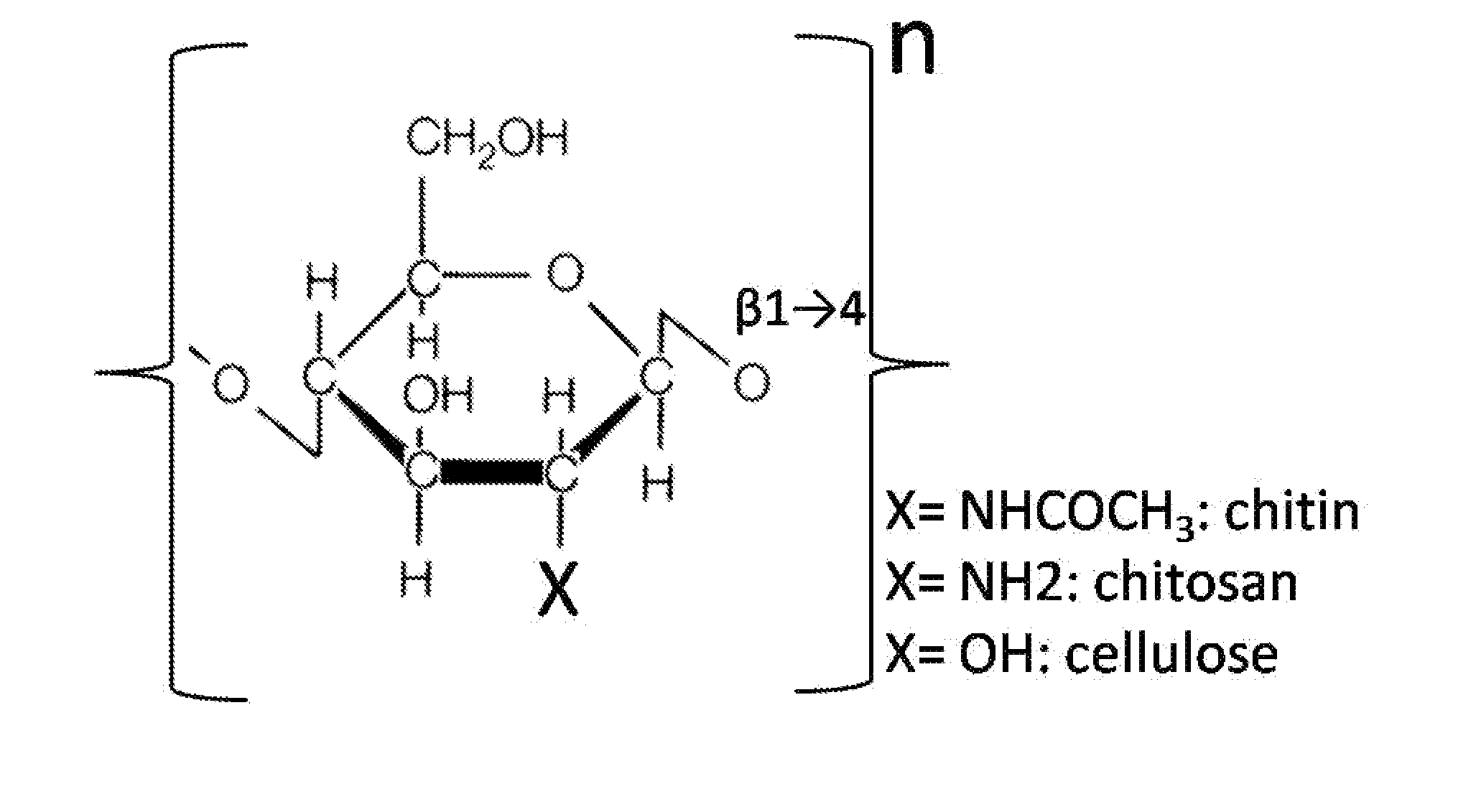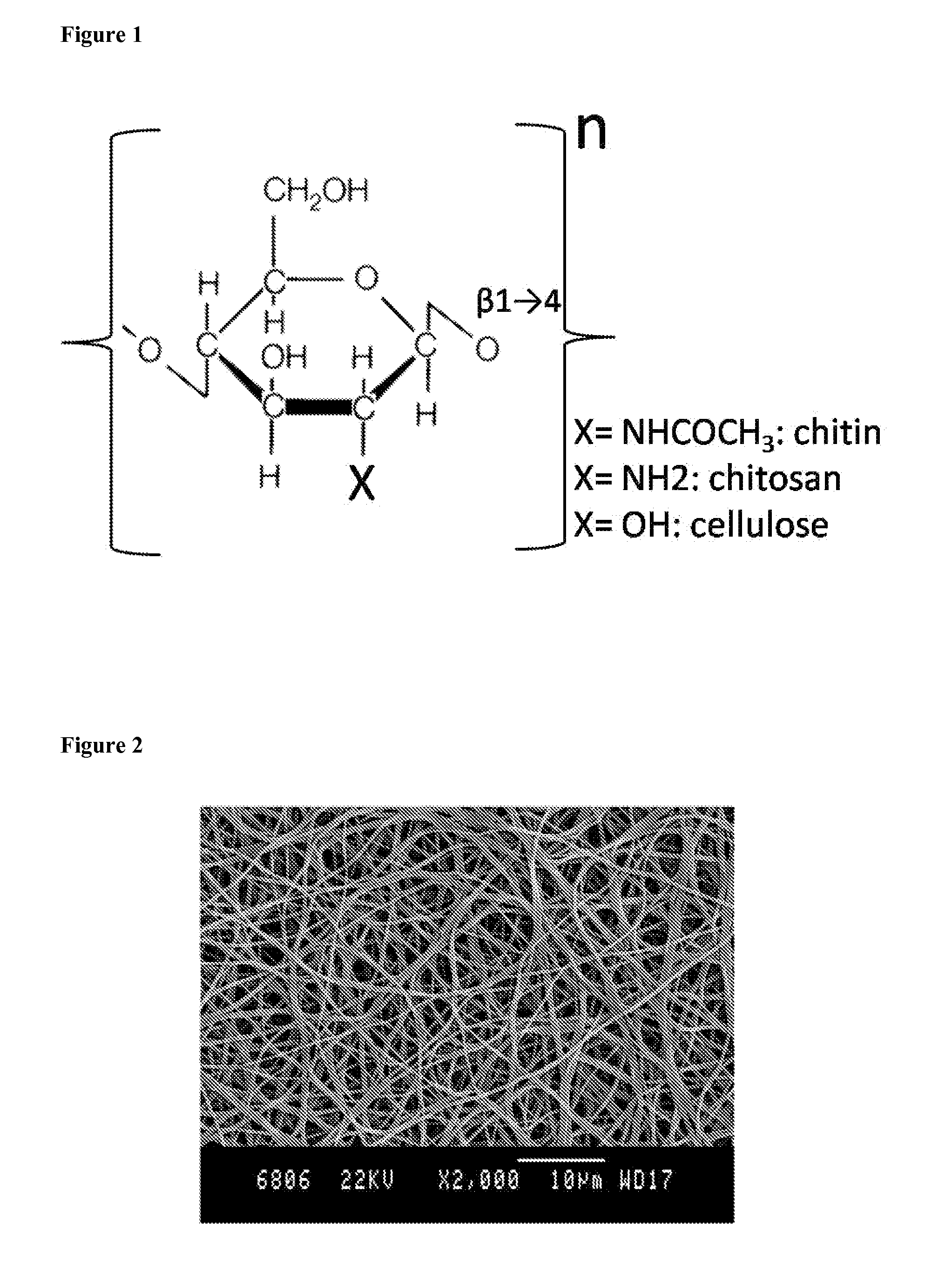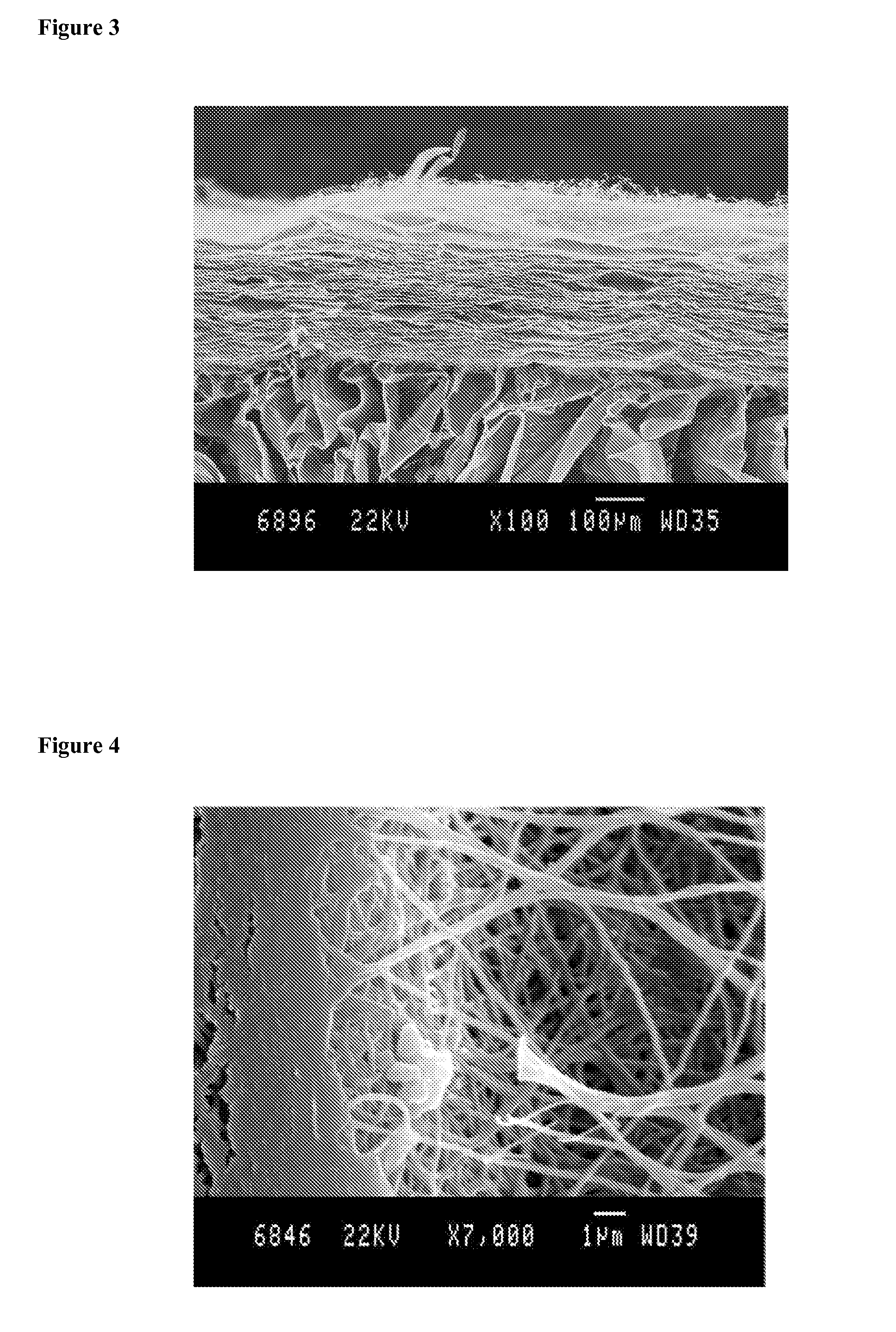Chitosan biomimetic scaffolds and methods for preparing the same
a biomimetic and scaffold technology, applied in the field of biopolymer development, can solve the problems of inability to adsorb large quantities of exudate from wounds, difficult electropinning of chitosan, and inability to permit three-dimensional growth of granulation tissu
- Summary
- Abstract
- Description
- Claims
- Application Information
AI Technical Summary
Benefits of technology
Problems solved by technology
Method used
Image
Examples
example 1
Electrospinning of Chitosan Solution
1.1 Material:
[0154]Medical grade chitosan with acetylation degree 19.6%, viscosity (1% solution in 1% acetic acid) 21 mPa·s, Mw 77 kDa (L08049), from Kitozyme, Belgium and PEO high molecular weight (HMW, 900000 g / mol) purchased from Aldrich were used as received. Acetic acid, ethanol and sodium hydroxide (Sigma) were analytical grade and used as received.
1.2 Method:
1.2.1 Electrospinning of Chitosan Membranes
[0155]Solutions of 10.5% chitosan, 4% HMW PEO were prepared by dissolving the appropriate amount of chitosan (in 6.5% acetic acid solution) and PEO (in distilled water), by stirring overnight. The next day, the chitosan and PEO solutions were then mixed to obtain mixtures with weight ratios of chitosan:PEO of 90:10. Two ml of the well homogenized resulting mixture were fed into 5 ml plastic syringes fitted with blunt tipped stainless steel needles (gauge 18 and 21). The solution feed was driven using a syringe pump (Razel Scientific Instruments...
example 2
Engineering of the Dressing
[0159]As reported above, bandages and dressings for treating wounds have to satisfy various requirements. This explains why the conventional fibrous matrix scaffold obtained so far by electrospinning of chitosan is not used today. Some of these disadvantages are that:[0160]a) a fibrous scaffold composed of chitosan nano fibers has poor mechanical properties that prevent easy handling and cause rapid destruction in situ when placed on wounds.[0161]b) nano fibrous scaffolds having only 2-dimensional structure are limited in applications since they do not provide protection against outside mechanical influences.[0162]c) thin nanofibrous scaffolds are not appropriate to maintain the moisture equilibrium promoting the wound healing process.[0163]d) The pores in scaffold made of cross-linked nanofibers are too small to permit cell invasion, which, in certain circumstances, is a disadvantage.
[0164]The present invention overcomes all of these problems by providing...
example 3
Co-Electrospinning of Chitosan with Proteins and Chemical Molecules Having the Ability to Maintain and to Preserve the Biological Activity of Proteins
3.1. Materials:
[0170]The β-lactamase BlaP of Bacillus licheniformis were used as protein models in co-electrospinning experiments. This protein corresponds to a bacterial enzyme with a globular 3D-structure. The recombinant protein was overproduced overproduced in E. coli and purified to homogeneity by using affinity chromatography methods.
3. 2. Methods:
3.2.1 Co-Electrospun Chitosan-Proteins Based Membranes:
[0171]For co-electrospinning experiments, the BlaP protein was added in the chitosan / PEO mixture (see Example 1) at a final concentration of 3 mg / ml and electrospun using the same procedure described in Example 1.2.1. In some cases, the mixture was also supplemented with a derivative of β-cyclodextrin.
3.2.2 Detection of Proteins in Co-Electrospun Chitosan Membranes
[0172]For the β-lactamase assays performed with BlaP, the co-electros...
PUM
| Property | Measurement | Unit |
|---|---|---|
| Fraction | aaaaa | aaaaa |
| Fraction | aaaaa | aaaaa |
| Size | aaaaa | aaaaa |
Abstract
Description
Claims
Application Information
 Login to View More
Login to View More - R&D
- Intellectual Property
- Life Sciences
- Materials
- Tech Scout
- Unparalleled Data Quality
- Higher Quality Content
- 60% Fewer Hallucinations
Browse by: Latest US Patents, China's latest patents, Technical Efficacy Thesaurus, Application Domain, Technology Topic, Popular Technical Reports.
© 2025 PatSnap. All rights reserved.Legal|Privacy policy|Modern Slavery Act Transparency Statement|Sitemap|About US| Contact US: help@patsnap.com



